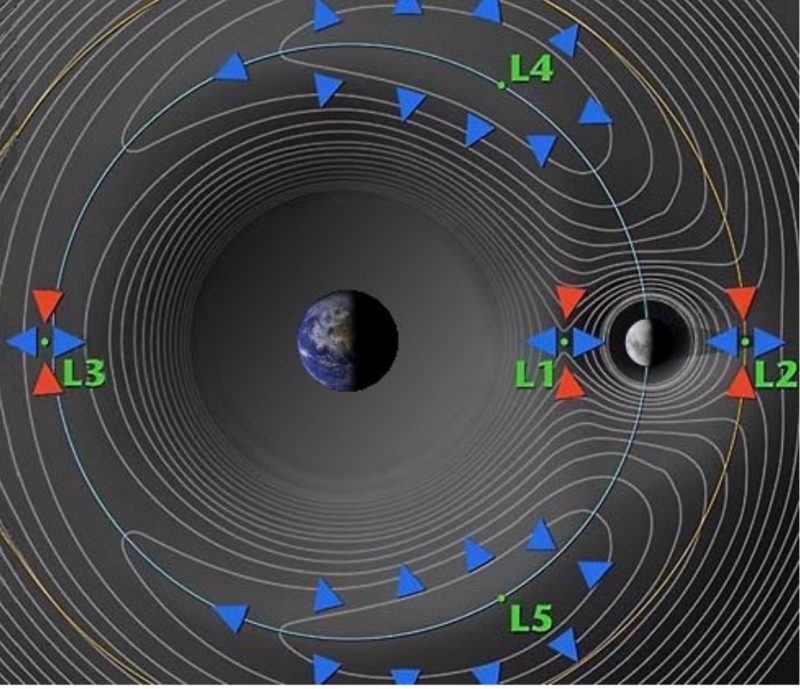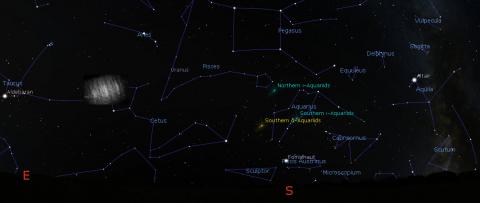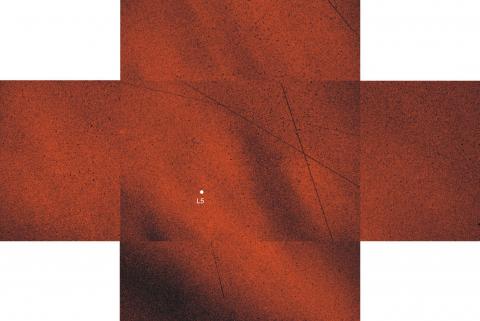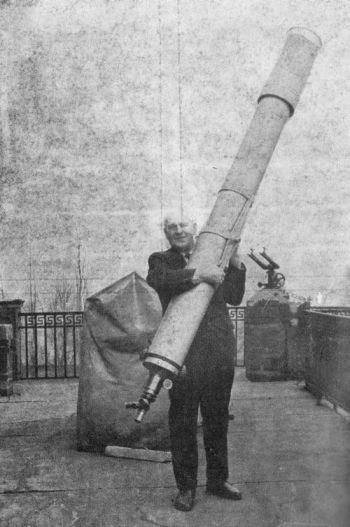
The Royal Astronomical Society (RAS) said this week (October 25, 2018) that astronomers may now have confirmed the existence of two elusive dust clouds, orbiting Earth much as our moon orbits it, at about the moon’s distance. They are known as Kordylewski clouds, first reported by and named for Polish astronomer Kazimierz Kordylewski in 1961. If they exist, Earth’s dust cloud satellites are exceptionally faint, so that their existence is controversial. The RAS is pointing to two new papers about the Kordylewski clouds in its peer-reviewed journal Monthly Notices of the Royal Astronomical Society. It said in a statement that a team of Hungarian astronomers and physicists may have confirmed the clouds just where Kordylewski said they would be, in semi-stable points just 250,000 miles (400,000 km) from Earth.
For comparison, the moon’s average distance is 238,900 miles (385,000 km) from Earth.

If they exist, the Kordylewski clouds lie at two special points in the Earth-moon system. These points – known as Lagrangian or Lagrange points – are known to be relatively stable, gravitationally. Objects, even dust, drifting near these points would tend to move neither toward the Earth nor toward the moon. They’d tend to stay put, moving ahead of and behind the moon in orbit. The RAS explained:
Two of these so-called Lagrange points, L4 and L5, form an equal-sided triangle with the Earth and moon, and move around the Earth as the moon moves along its orbit.
L4 and L5 are not completely stable, as they are disturbed by the gravitational pull of the sun. Nonetheless they are thought to be locations where interplanetary dust might collect, at least temporarily. Kordylewski observed two nearby clusters of dust at L5 in 1961, with various reports since then, but their extreme faintness makes them difficult to detect and many scientists doubted their existence.
The 2019 lunar calendars are here! Order yours before they’re gone. Makes a great gift.
In a paper earlier in 2018, the Hungarian team, led by Gábor Horváth of Eötvös Loránd University, modeled the Kordylewski clouds to assess how they form and how they might be detected. The researchers were interested in their appearance using polarizing filters, similar to those found on some types of sunglasses. The RAS explained:
Scattered or reflected light is always more or less polarized, depending on the angle of scattering or reflection.
AFter they determined what to look for, the researchers then set out to find the dust clouds. They set up a linearly polarizing filter system, attached to a camera lens and CCD detector, at Slíz-Balogh’s private observatory in Hungary (Badacsonytördemic).
Then the scientists took exposures of the purported location of the Kordylewski cloud at the L5 point.
The images they obtained show polarised light reflected from dust, extending well outside the field of view of the camera lens. The RAS said:
The observed pattern matches predictions made by the same group of researchers in an earlier paper and is consistent with the earliest observations of the Kordylewski clouds six decades ago.
Horváth’s group were able to rule out optical artefacts and other effects, meaning that the presence of the dust cloud is confirmed.


Judit Slíz-Balogh – who collaborated on this problem with the other scientists and is a lead author on one of the papers – commented:
The Kordylewski clouds are two of the toughest objects to find, and though they are as close to Earth as the moon are largely overlooked by researchers in astronomy. It is intriguing to confirm that our planet has dusty pseudo-satellites in orbit alongside our lunar neighbor.
The RAS said:
Given their stability, the L4 and L5 points are seen as potential sites for orbiting space probes, and as transfer stations for missions exploring the wider solar system. There are also proposals to store pollutants at the two points.
Future research will look at L4 and L5, and the associated Kordylewski clouds, to understand how stable they really are, and whether their dust presents any kind of threat to equipment and future astronauts alike.

Bottom line: Researchers say they have confirmed the existence of the Kordylewski dust clouds, which orbit at the L4 and L5 points in the Earth-moon system. In other words, the dust clouds orbit approximately in the moon’s orbit. They move ahead of and behind the moon in orbit.











